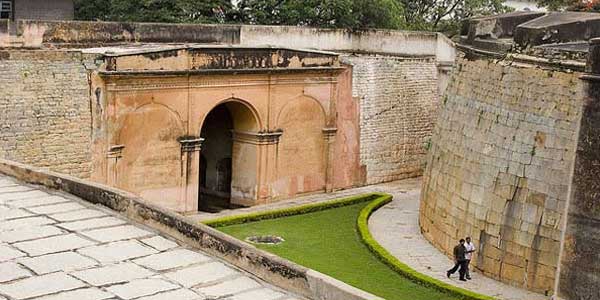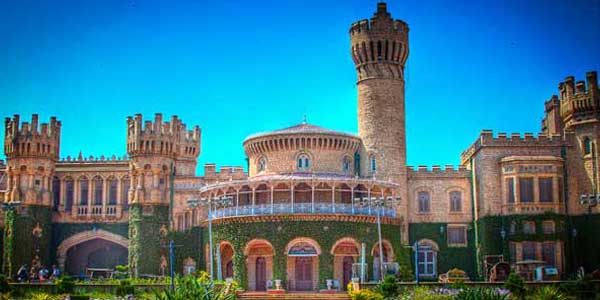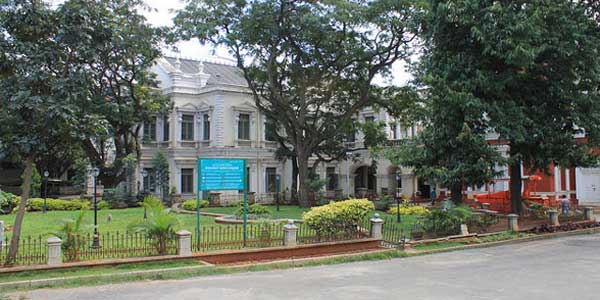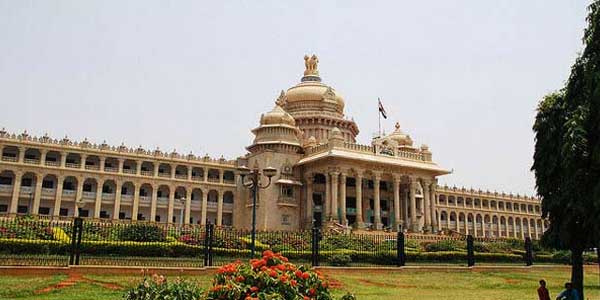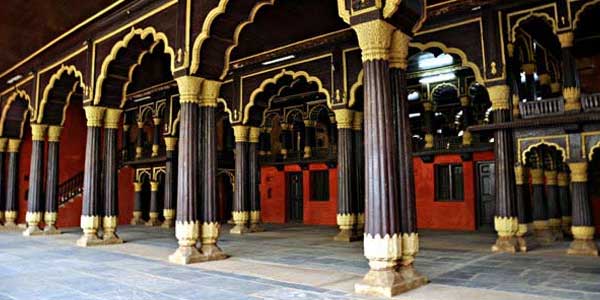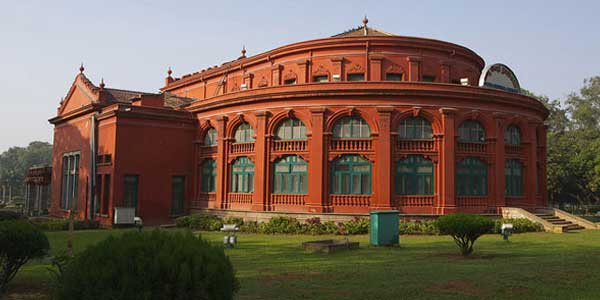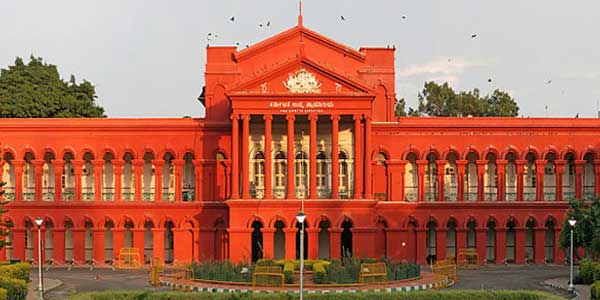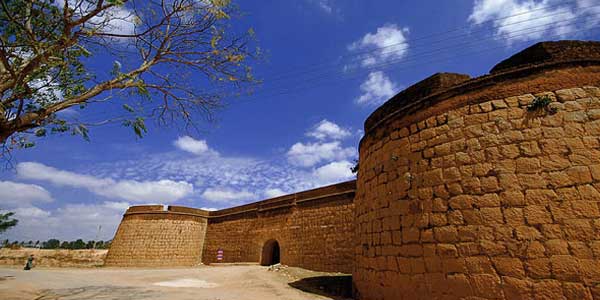
Devanahalli Fort
The History of Devanahalli dates back to 15th century, when a family of fleeing refugees from Conjeevaram (modern day Kanchipuram), camped near the foot of Ramaswami betta, located east of Nandi Hills. Their leader Rana Baire Gowda was apparently directed in a dream to set up a settlement in this region. He and his Morasu Wokkalu family settled in a small village, Ahuti, which was later known as Avati. His son Malla Baire Gowda founded Devanahalli, Chikka-ballapura and Dodda-ballapura. Kempegowda, the founder of Bangalore city is also from Morasu Wokkalu family.
Devanahalli was part of Gangawadi and later came under the rule of Rashatrakutas, Nolamba, Pallavas, Cholas, Hoysalas and the Vijayanagara rulers. During the time of Vijayanagra rule, Malla Baire constructed the initial mud fort in 1501 AD with the consent of Devaraya at Devanadoddi, the previous name of Devanahalli. In 1747 AD, the fort passed into the hands of the Wodeyars of Mysore under the command of Nanja Raja. It was conquered many times from the Marathas and later came under the control of Haider Ali and Tipu Sultan.
Tipu also renamed it as Yousafabad (the abode of Yousuf, the finest man) which never got popular. The fort finally fell into the British, under Lord Cornwallis in 1791, during the Mysore War.
Tipu Sultan was born in Devanahalli in 1750. The birthplace of Tipu Sultan, located very close to the Devanahalli Fort is just a small pillared enclosure with a stone tablet which declares the place to be the birth place of Tipu Sultan. The area around the enclosure is known as Khas Bagh.
History of Devanahalli Fort:
Rana Baire Gowda, father of Malla Baire Gowda had a dream in which he was directed to build a settlement in Devanahalli. In 1501, Malla Baire Gowda laid the foundation stone of Devanahalli Fort in the Devanahalli village. The Devanahalli Fort remained the home ground for many battles over a period spanning 200-250 years. The fort has many remains and ruins from the historic battles which were fought here.
Malle Byre Gowda and his descendants had the fort under their control for over 2 centuries from 1501 to 1749. Later in 1749, the dalwai of Mysore, Nanjarajaiah conquered the fort and a long history of Gowda family came to an end.
The fort was in possession of Nagarajaiah and soon went into the hands of the sultan leader, Hyder Ali. During this period of years (1749-1790), the fort witnessed several battles and also saw the overcome of new kingdoms in the region.
After Hyder Ali had the fort under his belt, the Devanahalli Fort went into the power of Tipu Sultan. Even the mighty Marathas had the fort under their control for a subsequent period but they could not keep up with the battles they fought against the Sultans.
In 1791, the Britishers under the leadership of Lord Cornwallis overthrew the Sultanate in the Mysore War and captured the fort. The fort was in total control of the Britishers for over 150 years until India gained Independence in 1947.
Bangalore Monuments
Bangalore Monuments, if you go by popular accounts, is the Silicon Valley and the Garden City of India. Heritage and culture have always flown freely in the veins of Bengaluru along with contemporary significance. The historical monuments of Bengaluru unfold a whole new world of historical, cultural, architectural, political, traditional and religious legacy and past of Karnataka. The forts and palaces manifest professionally competent town planning and the wonderful architecture at the time of some of the earliest dynasties in India. Sometimes the edifices have been created to commemorate a person or important event or designed as artistic objects to improve the appearance of a city or location. They have become iconic emblems of modern Bengaluru in all their glory.
The cultural heritage of Bengaluru consists of contributions and influences of successive dynasties that ruled it such as the Kadambas, Hoysalas, Chalukyas and the Vijaynagar Empire. The Mughals and the British reigned in Bengaluru as well. Rudiments of the people, the races and the religions were altered and assimilated as per conveniences and bear mark on the beautiful monuments that have stood the test of time.
The capital of Karnataka, Bangalore has a unique cultural identity with elements of both Hinduism and Islam and has several notable monuments including the Vidhan Soudha and Tipu's Palace. The city also has the magnificent Bangalore Palace in a blend of Gothic and Tudor architecture. The famous monuments always merit a visit, because they are the speaking stones of Bangalore's historical details.


